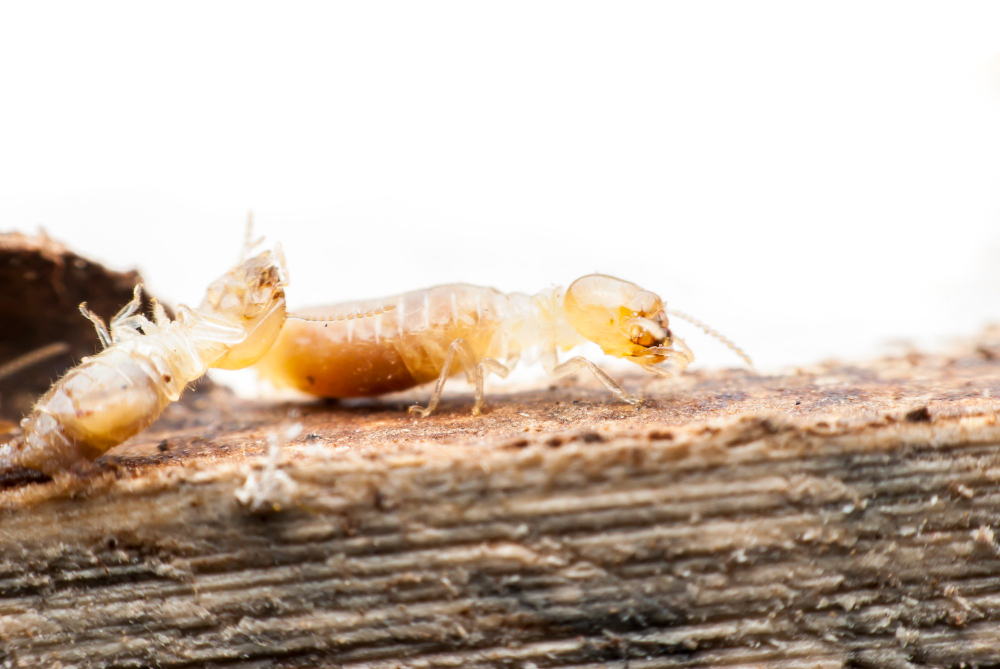Having termites in our home is a disgusting sight and can also be disastrous for our property. Antique wooden furniture always adds a sense of beauty and warmth to the interior of our home and guess what, termites love to damage this beauty.
To save our furniture from them we have to get rid of them as quickly as possible.
But how? Chemical treatments or natural? What could be the best treatment for termites?
Important Note: If you're tired of pests and want a reliable solution, then you should definitely consider seeking help from a professional pest control company. DIY solutions can be effective, but if you're dealing with a significant pest infestation, you don't want to rely solely on DIY methods. Pest control companies typically don't charge huge fees. You can fill out this form to receive free quotes from the top local pest control companies, and compare the quotes and see for yourself. Then, finally, your pest problems will be eliminated for good.
And how are we going to identify the infestation? What could be the signs of termites in furniture?
So many questions. One solution. This article. We will cover everything related to termites and wooden furniture.
Why Do Termites Prefer Wood?
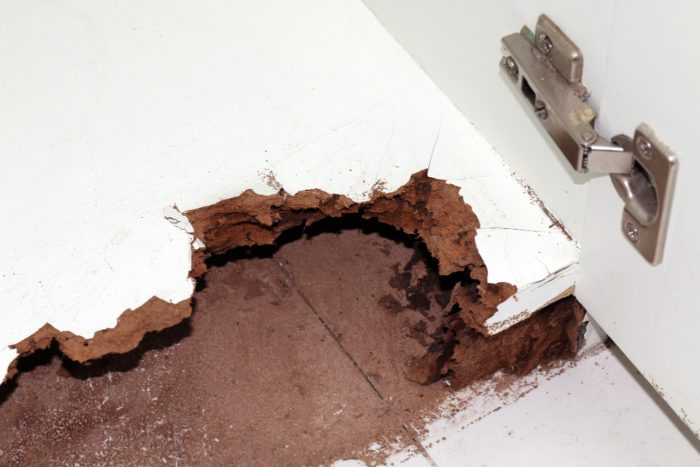
Do termites eat furniture? Yes, they do, but not exactly as what they want is just cellulose and wooden furniture provides it to them. Also, not many species have wood in their diet, so it gives termites an advantage over other insects. They don’t have to risk their lives for food.
Whether it’s dry, damp, or rotted wood, termites won’t take a step back from eating it. They will not hesitate to chew through a piece of wooden furniture as it satisfies their appetite and provides nourishment.
They have protozoa in their gut which gives them the wood-eating ability. These protozoa produce the right enzymes to facilitate the breaking down of cellulose into sugar.
Termites don’t eat wood just for survival. They do so to create galleries too. Using their strong mandible they chew through each layer of wood.
As the number of termites increases, worker termites burrow deeper into the wooden structure to expand their galleries. The resulting damage can be more substantial than we may think.
What Kind of Wood do They Prefer?
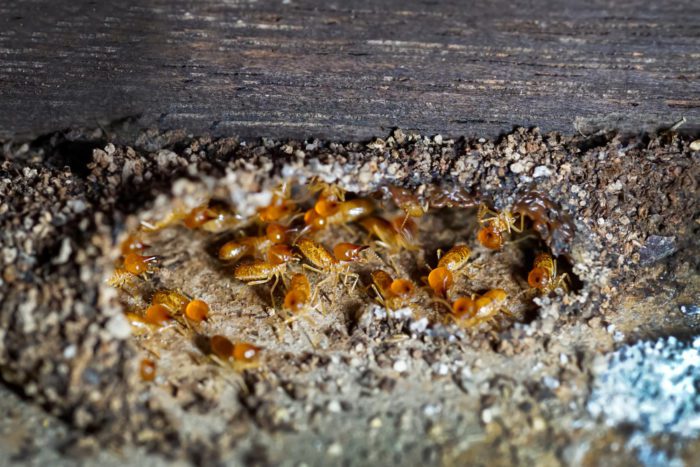
Different types of termites prefer different types of wood. Here, we are going to discuss the preferences of three types of termites. These are as follows:
- Subterranean termites are the most common species of termites. They prefer softwood and nest in moist, underground conditions. Their damaging pattern is distinct, one that follows the grain of the wood itself. Mud tubes are constructed by them and thus used for foraging up from their colony and into your home.
- Drywood termites infest dry wood which can be found in our house’s framing, furniture, hardwood floors, and structural timbers. They don’t require moisture from the soil, they can get it from the wood they have invaded. Drywood termites bore wood from the inside-out, so identifying damage from the naked eye is a tough task as the wood may still look smooth and undamaged.
- Dampwood termites prefer already damaged wood. It includes wood found in decaying logs, stumps, and woodpiles. These are likely to be found in houses where wood is decaying and is having moisture issues.
Identifying Termite Infestation
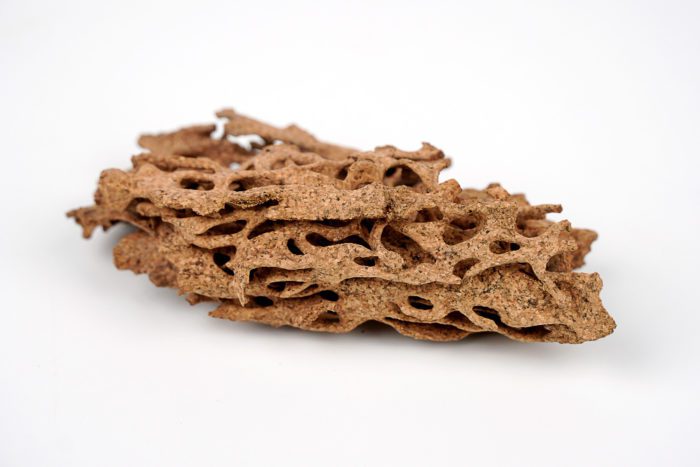
Noticing these tiny invaders is not an easy task until the damage has been done. To prevent furniture from getting damaged, we need to identify the termite infestation first. The following things can be done to identify a termite infestation:
Look for termite wings
Swarmers after landing shed their wings. Since they travel in groups, the wings will be in the form of piles. Look for these piles, if you find any then there may be a termite infestation.
Look for termite droppings
After eating wood, they leave behind their droppings known as frass. They create kick-out holes in wood and use them to push their droppings out of their nest. The droppings are of the same color as that of wood. They are 1/32 inch in length and are hexagonal.
Piles of frass can resemble sawdust so it is difficult to find them. Look for holes in wooden furniture, drawers, and internal horizontal surfaces.
Tapping furniture
Furniture infested by termites may look perfect from the outside but it may have some internal damage. They are capable of doing significant damage because they often go unnoticed. We can identify wooden damage by knocking or tapping on their surface. The ones who are damaged will sound hollow on tapping.
Mud tubes
The formations of these on the walls of the house are a sign of subterranean termites. The layers of the wall may fall off on pressing these tubes or beating them with pointed objects like iron nails. This shows the extent of damage mud tubes had done to the walls.
Getting Rid of Termites From Furniture
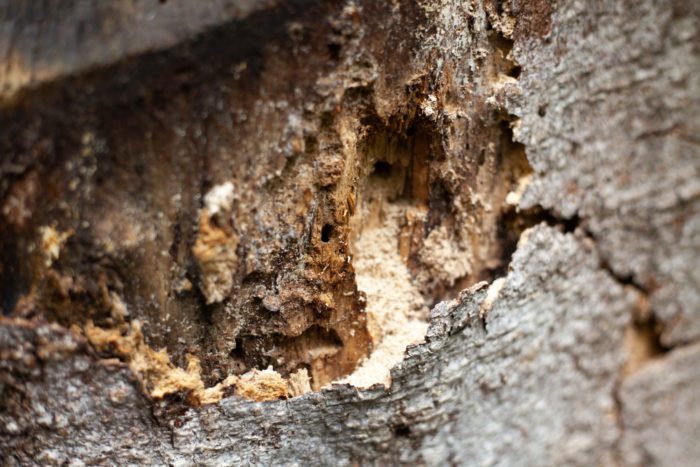
The following treatments of furniture are the natural ways to get rid of termites when infected by them.
Sunlight exposure
Termites’ weakness is sunlight. They cannot withstand it. If you have noticed any activities of termites in furniture, expose that particular part to the sunlight. It alone cannot destroy the termites but can reduce their number.
Also if you have located their hive, try to expose it to the sunlight. The same can be done with colonies residing in soil by digging holes around them.
Nematodes
Most people are not aware of nematodes. These are small microscopic worms that can easily destroy the termites. They release bacteria that are deadly for termites and they die soon after that. We just have to release it to the hives of the termites.
Cardboard traps
Termites love cellulose and cardboard being full of cellulose can be used as a trap. Take large cardboard and make it moist. Put it near the areas where you can find termite infestation or where you have found its signs.
Once the termite locates this cardboard trap, it will feed on them as it is made up of cellulose. After they get trapped, all you have to do is burn this trap somewhere.
Vinegar
Vinegar is easily available in every household so whenever you see a sign of termite infestation quickly treat it with vinegar. All we have to do is mix white vinegar with lemon juice. After pouring it into a spray bottle, spray it on the infected areas.
Orange oil
Orange oil is made up of d-limonene, a solvent very deadly for termites. On exposure to orange oil, termites’ exoskeleton begins to dissolve. It leads to loss of proteins and moisture and at last they die.
A spraying bottle can be used here as well. It also disrupts the pheromones of the termites which they use for communication.
Cayenne pepper
The next option to get rid of termites from your furniture is to use cayenne pepper. Simply sprinkle it on the infected areas. You can even mix it with vegetable oil and then apply it to the vertical spots.
Borates
Sodium borate is one of the effective ways to get rid of termites. The reason is simple, it affects the nervous system and then dehydrates them to death.
We can cover the infected areas with borax powder for about a week, which will kill termites. Secondly, we can mix this powder with hot water and can use it with the help of a spraying bottle. Spray it on wooden furniture and if possible inside the termite hives as well.
How to Prevent a Termite Infestation
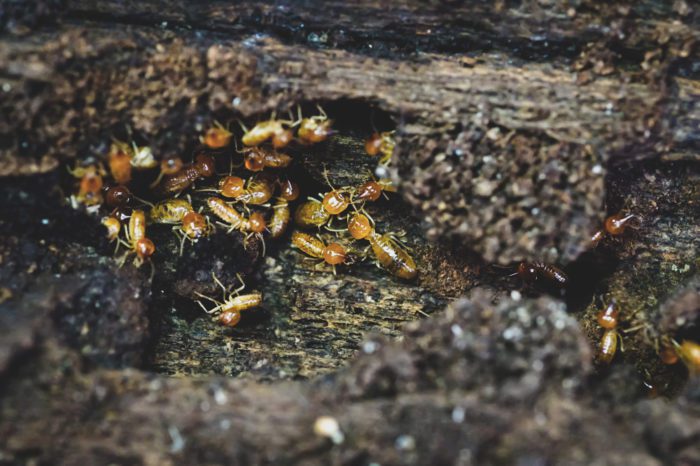
The ways mentioned above can be used when the furniture/house has been infested with termites. But we always say that prevention is better than cure. So why not implement this here. We can prevent termites from entering our house in the first place by following the steps mentioned below:
Home inspection
It’s better to remove termites in the early stages. It will prevent them from breeding and spreading through furniture. We need to have some weekly home inspections to remove all the possible infestations and thus prevent damage to our furniture.
Dry and Moisture free
Termites love moisture. They use this to chew through the layers of wood. So it’s better to make sure that the furniture is dry and moist-free.
Switching on fans and AC can be done to dry the moisture if present. On sunny days, windows can be kept open. This will allow the heat and fresh air to come in. Leakages should be checked. Prevent water from coming in contact with any furniture.
Block entry points
Cracks and holes must be sealed to prevent the entry of termites. Extra attention should be given to the pipelines and utility lines. All the vents must have screens good enough to prevent termite entry.
Remove wooden debris
The more wooden debris the more will be the chances of termites being around. This may even lead to the creation of an entry point for them. Remove tree branches and other wooden debris to avoid their entry.
Also, keep the small trees, shrubs and bushes maintained properly so that they don’t become the route of entry for termites.
Conclusion
The problem of termites in wooden furniture is common. There are strong reasons for that which we have already discussed. All the damage can be avoided by following the prevention techniques.
And even if there is damage, you can still go for natural treatments to get rid of termites. Although there are many natural ways to eliminate termites, we cannot rule out pest control. It is one of the most effective ways to kill termites. So if the infestation is out of control, better call the pest control team.

